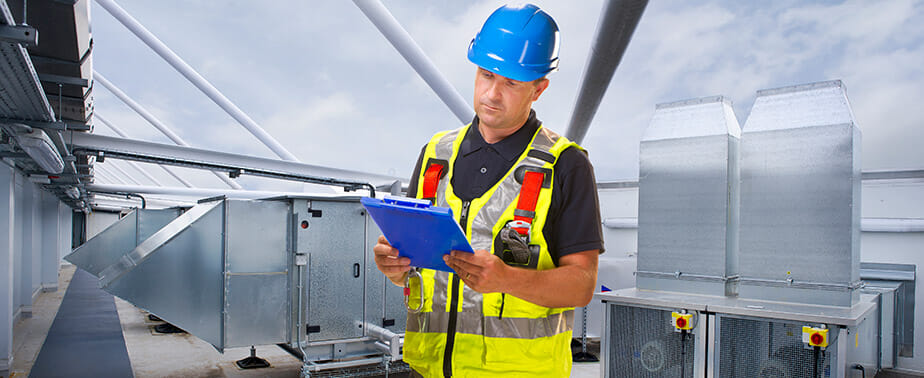The roof is one of the most important components of the building, but “out of sight is out of mind”. So, many facilities managers and property owners tend to forget their roofs until a problem arises. This approach leads to repetitive leaks, ongoing patch jobs, expensive repairs and ultimately that, “Oh no” moment of panic and dread when the roof needs to be replaced. Now, facilities managers can learn about and understand what’s happening above them. Here are five things that every facility manager needs to know about their roof.
#1: What Is The Leak History of the Roof?
The leak history of a roof tells the story of what’s going on in a roofing system. The pattern and presence of leaks over time can inform diagnosis of the problem. Repeated leaks around skylights, for example, may indicate a construction defect rather than roof damage. (That’s right, roof leaks are often more a result of a design or construction flaw than a roof defect, per se.)
Leak history can also help the contractor more accurately assess the roof’s potential remaining life. A complete record of where water has gotten in and how it was repaired can help the contractor and Owner know whether or not water has infiltrated the roof system and saturated the insulation – which is the death knell for a roof.
#2: Who Is Getting On The Roof?
While Mother Nature can be hard on a roof, humans are usually a roofing system’s biggest enemy. If a roof is accessible to tenants or to other trade contractors for heating, ventilation and air conditioning; and other repairs, the roof is at risk of puncture, cuts, tears, and other damage.
Controlling access to the roof is essential for protecting the integrity of the roofing system. However, facilities managers don’t need to be fearful of granting access. People who use the roof should be able to come to the manager and let them know if they inadvertently caused damage. That means being friendly and available to tenants, repair workers and contractors who want access to the roof. Good access control and good communication allows managers to track issues they may never have known about otherwise.
#3: What Are the Safety Hazards Of The Roof?
Every roof is rife with safety hazards beyond the sheer height of the building. Some hazards are obvious, such as the edge of the roof being a fall hazard. Others are not quite as evident.
Skylights can be an extreme hazard. These features are not built for sitting or holding a lot of weight, and people on the roof may be tempted to rest on top of one, or place toolboxes on the skylight, putting themselves and the people inside in danger. Hidden corners, drop-offs and L-corners are also a hazard for anyone walking on a roof, especially they have never been on that particular building before. It’s easy to approach edges and corners in non-square layouts without realizing it.
#4: How Is The Roof Made
A thorough facilities manager should know as much as possible about the way the roof is built including:
- When the roof was built
- Where the design plans are
- The roofing materials
- The manufacturers of those materials
- The company that installed the roof
- The terms of the warranty
Knowing these details can help form a baseline understanding of the roof itself, and allows the facilities manager to communicate more effectively with a roofing contractor.
#5: When Was The Last Inspection?
Regular roofing inspections are the key to maintaining a roof that performs well and lasts as long as possible. One of the most important things a facility manager needs to know about their roof is the inspection history. If it has been more than a year, or if no one on the facilities team has any idea when the last inspection was, it’s been too long.
These roofing inspections help get ahead of major issues, keep the facilities team in the loop on areas to watch and conditions to observe, and ensure that budgets can properly be set for future repairs and re-roofing projects.
The more familiar the facilities manager becomes with the roof, the better. When it comes to prolonging roof life, choose a good contractor and make strong repair decisions, always keep in mind that you can never be armed with too much information. It is worth the time for a facility manager to learn and file away as much information as possible about their roof, in order to get the most value from the system.

